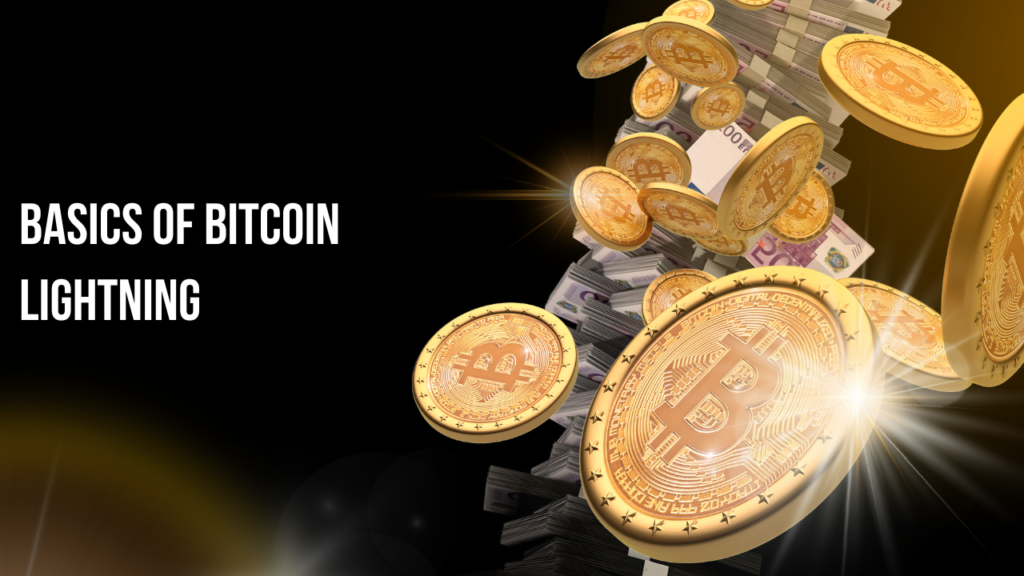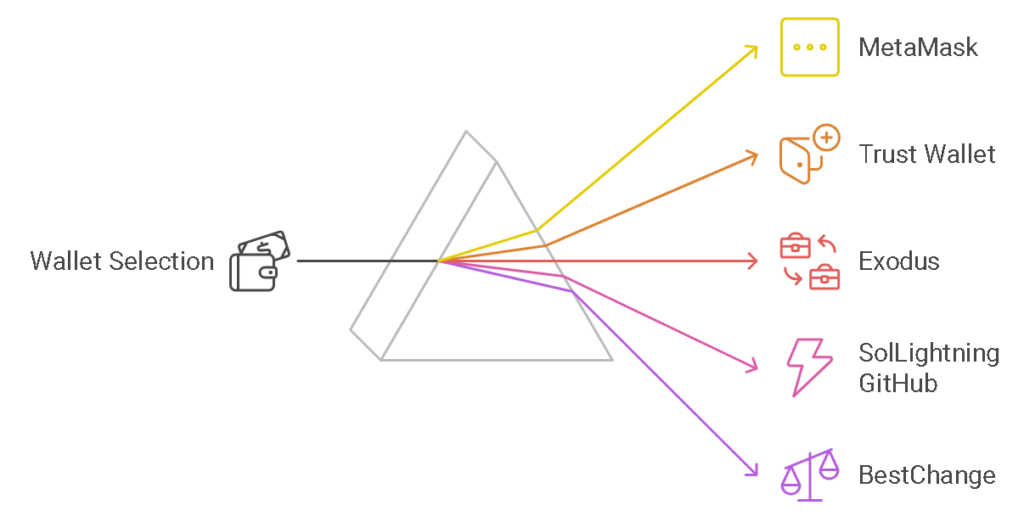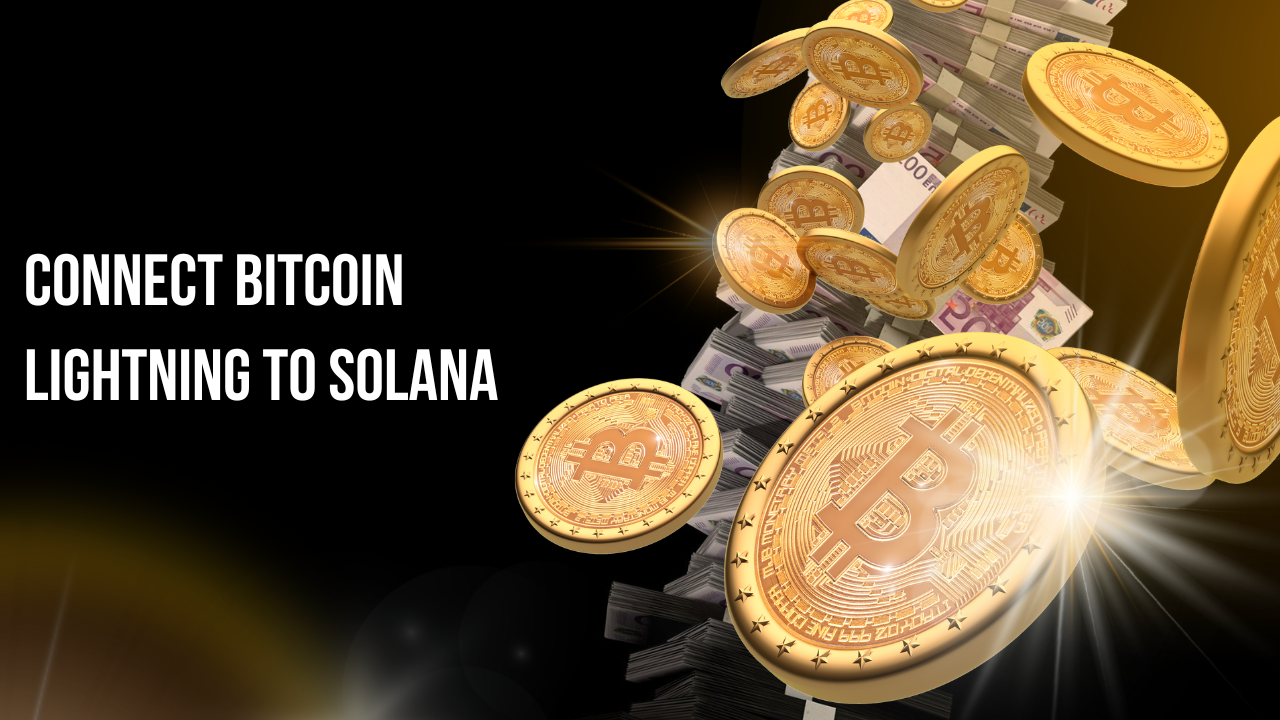In the rapidly evolving world of blockchain technology, interoperability between different networks is becoming increasingly crucial. As the blockchain ecosystem grows, the ability to seamlessly connect disparate systems can unlock new opportunities and enhance the efficiency of transactions. This need for cross-network integration is particularly relevant for cryptocurrencies, where different blockchains offer unique advantages.
Bitcoin, the pioneer of digital currencies, is renowned for its security and widespread adoption. However, its network faces limitations in transaction speed and cost. Enter the Bitcoin Lightning Network—a second-layer solution designed to address these challenges by enabling faster and cheaper transactions through off-chain channels.
On the other hand, Solana represents the cutting edge of blockchain performance. Known for its lightning-fast transaction speeds and minimal costs, Solana has become a popular choice for developers and users seeking scalability and efficiency. By connecting Bitcoin Lightning with Solana, we can harness the strengths of both networks, facilitating more versatile and cost-effective transactions across the blockchain landscape.
Basics of Bitcoin Lightning
What is Bitcoin Lightning?
Definition: The Bitcoin Lightning Network is a second-layer protocol built on top of the Bitcoin blockchain. It aims to address Bitcoin’s scalability issues by enabling transactions to occur off-chain, thus reducing congestion on the main Bitcoin network and lowering transaction fees.
Features
- Payment Channels: The Lightning Network allows users to create private channels for transactions, which are settled off-chain. This reduces the need to record every single transaction on the Bitcoin blockchain.
- Off-Chain Transactions: Transactions are conducted off the main Bitcoin blockchain, which speeds up processing times and reduces costs.
- Instant Settlements: Payments can be completed almost instantly due to the off-chain nature of transactions, compared to the slower confirmation times on the Bitcoin network.
Use Cases
- Microtransactions: The Lightning Network is ideal for small, frequent payments, such as in-app purchases or tipping, where traditional Bitcoin transactions would be too costly.
- High-Frequency Trading: For traders requiring rapid and frequent transactions, the Lightning Network offers a solution that mitigates the delays and fees associated with on-chain transactions.

What is Solana?
Definition: Solana is a high-performance blockchain platform designed to deliver fast and scalable decentralized applications (dApps). It boasts high throughput and low transaction costs, making it a preferred choice for various blockchain-based solutions.
Features
- Scalability: Solana’s architecture supports high transaction volumes, allowing the network to handle thousands of transactions per second.
- Decentralized Applications (dApps): The platform supports a wide range of dApps, from DeFi protocols to NFT marketplaces, providing developers with a robust ecosystem for building and deploying applications.
- Fast Consensus Mechanism: Solana employs a unique consensus mechanism known as Proof of History (PoH), which enhances transaction speed and network efficiency.
Use Cases
- DeFi: Solana’s scalability and low fees make it an attractive option for decentralized finance applications, including lending, borrowing, and trading platforms.
- NFTs: The platform’s performance capabilities are well-suited for the growing NFT market, supporting the creation and trading of digital collectibles.
- High-Speed Trading: Solana’s fast transaction processing is beneficial for high-frequency trading scenarios where speed is critical.
Connecting Bitcoin Lightning to Solana
Using a Cross-Chain DEX
Overview: Decentralized exchanges (DEXs) that facilitate cross-chain swaps are platforms designed to enable users to exchange assets across different blockchain networks. These platforms leverage smart contracts and specialized protocols to handle transactions seamlessly between incompatible blockchains. By utilizing cross-chain DEXs, users can swap Bitcoin (including Lightning Network transactions) for Solana (SOL) and vice versa.
Example: The SolLightning platform is a notable example of a cross-chain DEX that supports swaps between Bitcoin (both on-chain and Lightning) and Solana’s SPL tokens. This platform utilizes submarine swaps, a technique optimized for Lightning Network transactions, to ensure secure and efficient exchanges.
Steps
- Access the DEX: Navigate to the SolLightning platform or another cross-chain DEX that supports Bitcoin Lightning to Solana swaps.
- Connect Your Wallet: Ensure you have both a Bitcoin wallet compatible with Lightning and a Solana wallet. Connect these wallets to the DEX.
- Select Swap Options: Choose the amount of Bitcoin you want to convert into Solana and select the appropriate swap options provided by the platform.
- Confirm Transaction: Follow the platform’s prompts to complete the swap. The DEX will handle the conversion process, ensuring that your Bitcoin is exchanged for Solana effectively.
Visual Aid: [Insert Screenshot or Diagram of the SolLightning Platform Here]

Using Exchange Services
Overview: Direct exchange services offer a straightforward approach for converting Bitcoin Lightning to Solana without the need for registration or complex processes. These services act as intermediaries, facilitating the exchange between different cryptocurrencies through their own platforms.
Examples
- StealthEX: An exchange service that allows for anonymous and direct conversions between Bitcoin Lightning and Solana.
- ChangeNOW: Another popular service that provides a simple interface for exchanging Bitcoin Lightning with Solana.
Steps
- Visit Exchange Service: Go to the website of StealthEX or ChangeNOW.
- Select Currencies: Choose Bitcoin Lightning as the input currency and Solana as the output currency.
- Enter Amount: Specify the amount of Bitcoin Lightning you wish to exchange for Solana.
- Complete Exchange: Follow the instructions provided by the service to finalize the exchange. The platform will manage the conversion and provide you with your Solana.
Manual Methods
Overview: If automated services are not available or suitable, manual methods through peer-to-peer exchanges and forums can be utilized. These methods involve direct swaps between individuals, often facilitated through online communities or trading forums.
Considerations
- Safety Tips: Always conduct transactions with reputable individuals to avoid scams. Verify the identity of the counterparty and use secure platforms for communication.
- Reputation Checks: Look for reviews or feedback from other users to ensure the reliability of the person you’re trading with.
- Avoiding Scams: Be cautious of deals that seem too good to be true and always use escrow services if available to protect both parties involved.
Steps
- Identify a Trusted Peer: Find a reputable individual or forum where users offer direct swaps between Bitcoin Lightning and Solana.
- Agree on Terms: Negotiate and agree on the terms of the swap, including the amount and exchange rate.
- Execute the Swap: Complete the transaction as agreed, ensuring that both parties fulfill their obligations and that the exchange is conducted securely.
Recommended Tools and Resources
Wallets
Overview: To efficiently manage Bitcoin Lightning and Solana, choosing the right wallets is essential. These wallets should support both Bitcoin (with Lightning Network capabilities) and Solana. Below are some recommended wallets that cater to these needs:
MetaMask: Primarily known for its support of Ethereum and ERC-20 tokens, MetaMask also integrates with various decentralized applications (dApps) and can manage multiple types of assets through browser extensions or mobile apps. For Bitcoin Lightning and Solana, MetaMask may require additional configurations or integrations.
Trust Wallet: A versatile wallet that supports a wide range of cryptocurrencies, including Bitcoin and Solana. Trust Wallet offers a user-friendly interface and is available on both mobile and desktop platforms, making it easy to manage your assets and connect with dApps.
Exodus: A comprehensive wallet with a built-in exchange feature. Exodus supports a variety of cryptocurrencies and provides a seamless experience for managing Bitcoin and Solana. It includes an integrated exchange platform that can facilitate the conversion of assets directly within the wallet.

Resources for Learning
- SolLightning GitHub: This repository contains documentation and resources related to the SolLightning protocol, which facilitates cross-chain swaps between Bitcoin Lightning and Solana. It is an invaluable resource for understanding the technical details and implementation of this protocol. SolLightning GitHub
- BestChange: A platform that helps users find reliable exchangers for various cryptocurrency conversions, including Bitcoin Lightning to Solana. BestChange aggregates information on different exchange services, allowing users to compare rates and choose trustworthy options. BestChange
Additional Links
These tools and resources will aid in managing your cryptocurrencies effectively and guide in connecting Bitcoin Lightning with Solana. Whether you’re looking for reliable wallets or seeking comprehensive documentation, these recommendations will help you navigate the complexities of cross-chain transactions.
FAQs Connect Bitcoin Lightning to Solana
What is the Bitcoin Lightning Network?
The Bitcoin Lightning Network is a second-layer solution designed to facilitate faster and cheaper transactions on the Bitcoin blockchain. It achieves this by creating payment channels between users, allowing for off-chain transactions that are instant and cost-effective, while reducing the load on the Bitcoin mainnet.
What makes Solana a popular choice for blockchain applications?
Solana is renowned for its high performance, including fast transaction speeds and low costs. Its scalable architecture supports a wide range of decentralized applications (dApps) and smart contracts, making it an attractive choice for DeFi projects, NFTs, and other high-speed trading applications.
How do cross-chain decentralized exchanges (DEXs) work?
Cross-chain DEXs enable users to trade assets between different blockchain networks. For example, platforms like SolLightning facilitate swaps between Bitcoin (including Lightning) and Solana. These DEXs use advanced protocols to ensure seamless transactions and maintain security across different blockchains.
What is the role of services like StealthEX and ChangeNOW in this process?
Services such as StealthEX and ChangeNOW offer direct exchange options between Bitcoin Lightning and Solana. They simplify the process by handling the conversion without requiring users to engage in complex transactions or manage multiple wallets, thus providing a user-friendly experience for swapping cryptocurrencies.
What are the key considerations when using manual methods for swapping cryptocurrencies?
When using manual methods such as peer-to-peer exchanges or forums, it is crucial to ensure the reputation and reliability of the other party. Always verify the credibility of users, agree on clear terms before executing the swap, and consider using escrow services to protect against potential scams.
Which wallets are recommended for managing Bitcoin Lightning and Solana?
Recommended wallets include MetaMask, Trust Wallet, and Exodus. These wallets offer support for multiple cryptocurrencies and, in the case of Trust Wallet and Exodus, also include features for managing Bitcoin Lightning and Solana.
Where can I find more information about the SolLightning protocol?
Detailed information about the SolLightning protocol is available on its GitHub repository. This resource provides documentation on how to use the protocol for cross-chain swaps between Bitcoin Lightning and Solana.
How can I ensure I’m using a reliable exchanger for converting Bitcoin Lightning to Solana?
Platforms like BestChange list reputable exchangers and provide comparisons of rates and services. This can help you choose a reliable exchanger for your transactions and ensure you get the best value for your conversion.
Are there any fees associated with using decentralized exchanges or exchange services?
Yes, both decentralized exchanges and exchange services typically charge fees for their services. These fees can vary depending on the platform and the size of the transaction. It’s advisable to check the fee structure before completing a transaction to understand the costs involved.
What should I do if I encounter issues during a cross-chain transaction?
If you experience issues, first check the platform’s support resources or contact customer service for assistance. Additionally, ensure you have followed all the correct steps and that your wallets are properly connected. If problems persist, reviewing transaction logs and seeking help from community forums may provide further guidance.


















1 thought on “How to Connect Bitcoin Lightning to Solana”